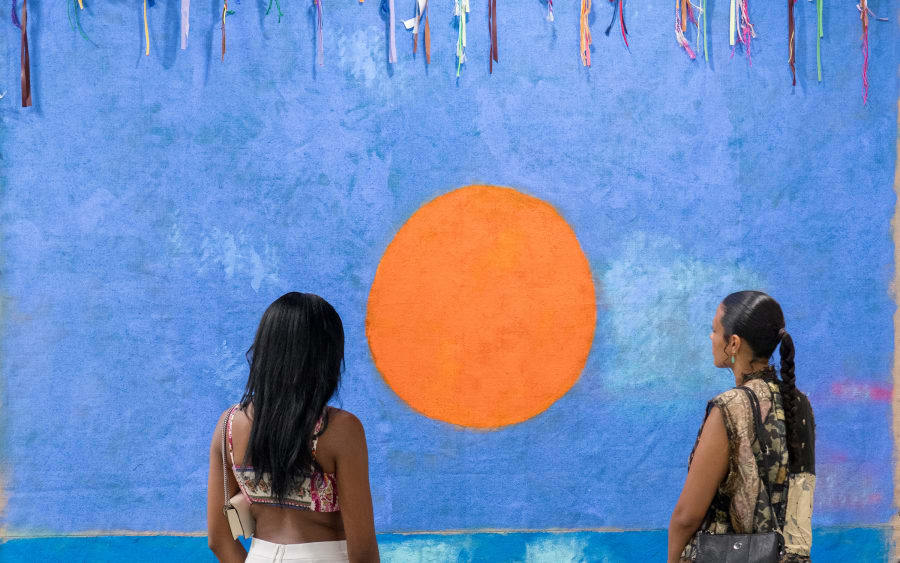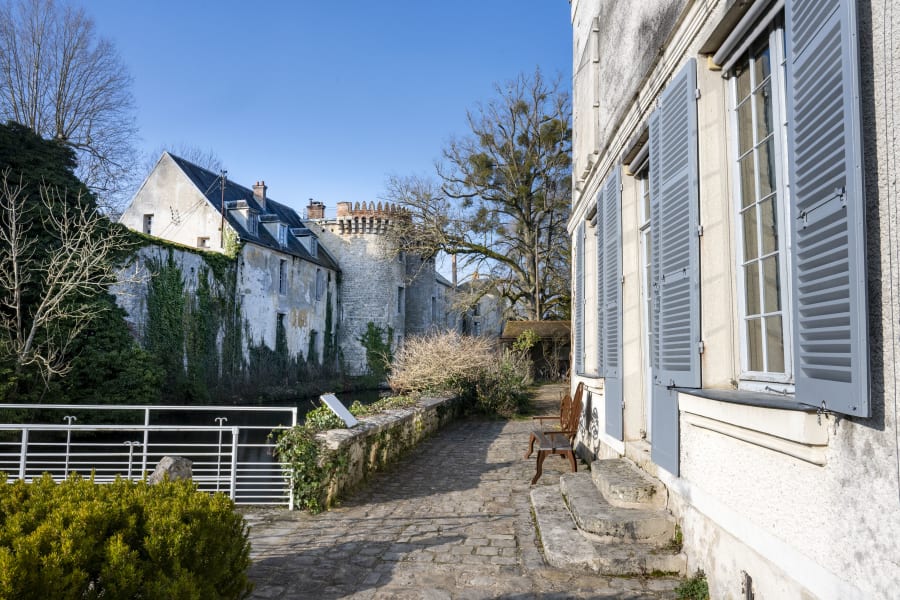The curator and collector Hannah Beck-Mannagetta had just moved into her new home in Berlin’s Charlottenburg district when she received an unexpected call. A friend, who worked at an Asia-based gallery, told her the venue was closing its Berlin outpost and urgently needed to empty its storage. ‘They had one day to clear out, so we drove over one Sunday to get an early look,’ she recalls. ‘As we pulled in, we saw cars leaving with artworks so big the frames were sticking out of the windows. We bought some photographs by a well-known Indian photographer. These were beautiful portraits the artist had rejected because the framing wasn’t quite right. It was all going to be thrown away otherwise, so it felt good to save them.’
Such clearance sales are exceedingly rare, but the situation raises a compelling question: Are there other ways to build an impressive art collection when you cannot draw on substantial resources? Starting in the 1960s, the New York-based collector couple Herb and Dorothy Vogel famously amassed an outstanding collection of nearly 5,000 Conceptual and Minimalist works on one civil servant’s salary, but is collecting well with limited means still possible today? Absolutely – if you are curious, persistent, and follow a few key strategies.
In A Poor Collector’s Guide to Buying Great Art, Norwegian collector Erling Kagge suggests that passion can open more doors than money ever will. It is a sentiment echoed by Adina Rieckmann, a collector and the chairwoman of the Dresden Art Association. Her highly personal and somewhat eclectic approach brings together sought-after artists such as Miriam Cahn and Nina Canell with lesser-known figures such as Stephanie Lüning and Nadine Wölk – respected Dresden artists who remain largely unknown outside the region.
Like many other collectors, she scouts out emerging talent. ‘Visit local established galleries and ask about the younger artists on their program,’ says Rieckmann. ‘These works often cost significantly less than those by more prominent names, [but the artists’ involvement in a good gallery is] usually a sign the investment is sound.’ Another strategy is to collect in your own region, or a region of interest, looking for hidden gems that suit your taste. After all, many celebrated artists were once working in quiet obscurity, and by looking beyond major art centers, there is a chance to discover brilliance. ‘You shouldn’t limit yourself,’ says Rieckmann. ‘Our curiosity extends far beyond what’s on our doorstep: We collect work from artists in New York and Tokyo as well as in Tbilisi and Prague.’
Collecting locally or in specific regions is not without risk – markets are generally smaller and critical attention less certain – but it can circumvent the sometimes hype-driven cycles of the global art market, as well as add depth and individuality to a collection. In the past year, the Zurich-based collector and entrepreneur, Dean Eigenmann, has been traveling to Kyiv, drawn by the energy of its contemporary scene and the chance to support artists working directly in response to war. ‘So much of the market is fixated on artists who’ve been producing for decades,’ he says. ‘But I’m interested in people who are reacting to what’s happening now. That kind of immediacy doesn’t usually come from someone with a 60-person studio.’
Eigenmann, whose partner is Ukrainian, first visited Kyiv through a Berlin-based tattoo artist who had returned to Ukraine. ‘I went to get a tattoo, and she mentioned an open studio event at the Kyiv Institute of Automation,’ he says. ‘I bought a few pieces from her, and then went back to buy some more.’ Eigenmann is hitting on another way to find affordable art: ‘Open studios and art-school shows are full of young artists making exciting work and there’s a chance you find an artist before their work increases in value,’ he explains. ‘But more than that, I’m a young collector and I want to support young talent. I’m not looking to make money from what I buy.’
Then come alternative modes of exchange. Although it might not be front of mind, many galleries – and a great many artists – are receptive to bartering, offering artworks in return for services such as legal advice, writing work, or web development. The Berlin-based photographer Vitali Gelwich has built a portion of his collection through exactly this kind of creative collaboration. ‘Last year, a gallery asked me to make a short film about one of their artists, a young Berlin painter whose work I really admire,’ he says. ‘I covered the production costs, and in return, they gave me one of her paintings.’ Gelwich grew up in Brandenburg without significant financial privilege. ‘I focus mainly on artists of my generation,’ he says. ‘Of course, I’d love to own something by one of the OGs, but that quickly becomes unaffordable.’
Some collectors employ a mix of approaches. The collector couple Florian Staudinger and Paul Hallam buy art through galleries and at art fairs but are just as keen on discovering work by lesser-known artists. They collect across eras, mediums, and budgets, including editions and works on paper. ‘We love buying editioned work,’ says Staudinger over the phone. ‘And when we buy them, they’re usually by bigger names: a Richard Serra, an airport triptych by Fischli & Weiss. Our most recent edition is a piece by Olivier Mosset.’
In the early 2010s, Staudinger took over as trustee of the Mendling, a family estate two hours from Vienna, including its own turreted mini-castle. Its many rooms are filled with a vibrant mix of antique and modern furniture and contemporary art by the likes of Yayoi Kusama and Thomas Demand. In 2017, while searching the internet, they discovered the work of Bruce Boice, a New York conceptual artist who had fallen into obscurity, and were intrigued.
‘We couldn’t find much about him beyond some exhibitions with Sonnabend Gallery in New York in the 1980s,’ says Staudinger. ‘We bought a few pieces through online auctions and then we got a call from a dealer in Belgium who’d acquired Boice’s entire estate. There were 160 minimalistic works on paper. Really elegant little drawings of boxes.’ Unable to resist, the couple purchased 80 of them for about EUR 80 each. ‘I have 20 covering an entire wall of one of our guest rooms,’ says Staudinger. ‘They look stunning.’
After two decades of dedicated collecting, Staudinger, who previously worked in client relations for Sotheby’s, is keen to share his advice to budget-conscious collectors. ‘When we buy from younger artists or at art school open days, we’ve learned that if you buy large-scale works, they tend to be significantly cheaper, because most people don’t have the space to hang them. We’ve bought works as large as two-and-a-half to three meters wide and up to two meters high, and they’re all comparatively cheap.’ Buying big certainly has its merits (but as a strategy only makes sense if you have 16-room house to fill).
In the end, size matters less than the love of an artist’s vision. Staudinger is just as passionate about the large, nine-piece Mappa Mundi (1999) by the late American artist Richard Nonas, which hangs on the wall of the couple’s Vienna living room, as he is about much smaller finds. ‘Recently, we came across an original Sol LeWitt postcard that he’d drawn on directly.’ says Staudinger. ‘It’s very small, and cost just EUR 800. The best advice, really, is to do your research. When you find an artist you like and start investigating them, going through everything online and finding out whatever you can, you’ll be amazed what you can turn up.’
Duncan Ballantyne-Way is a writer and editor based in Berlin.
Caption for header image: Paul Hallam and Florian Staudinger at home. Photograph by Simon Veres.
Published on August 18, 2025.


